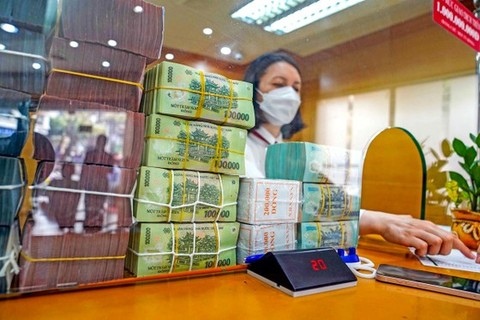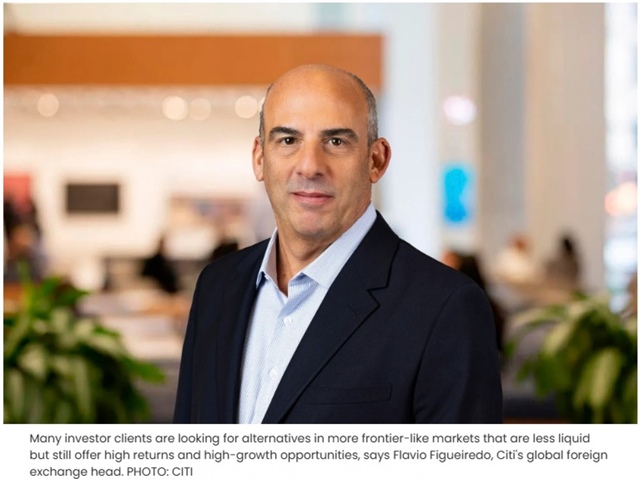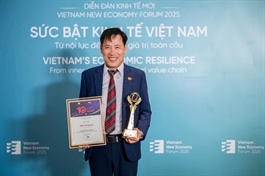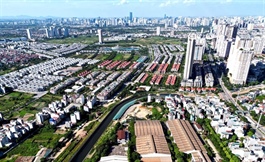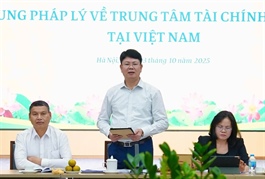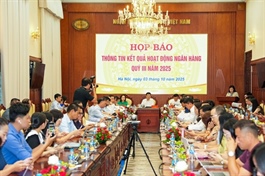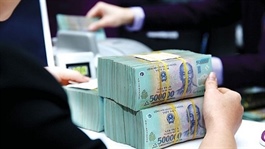Green finance tapped into via carbon arena
Green finance tapped into via carbon arena
The formation of a domestic carbon market and international connectivity opportunities have opened up a sustainable green finance channel to support Vietnam in achieving its green growth goals.
Participating in the sale of carbon credits on the international market could bring Vietnam a revenue of $1.9 billion per year, contributing 0.3 per cent to annual GDP growth, a workshop on the topic was told late in September. The event was organised by the Department of Climate Change under the Ministry of Agriculture and Environment (MAE) in collaboration with the Southeast Asia Energy Transition Partnership progamme.

Green finance tapped into via carbon arena, Photo: Shutterstock |
Ho Cong Hoa, an expert at the Academy of Policy and Development, said the revenue figure was calculated based on a high price scenario, about $47 per carbon credit, assuming an international sales rate of 70 per cent and 56 valid credit-generating measures.
In the case of lower prices, at only $20 or an average of $34 per credit, Vietnam’s potential revenue could still reach $600 million and $1.2 billion per year, respectively. Notably, transaction fees alone, estimated at 2 per cent of revenue, could contribute over $10 million to the state budget.
“These calculations are based on the average carbon credit price of the Corsia programme and trading markets in Singapore, Japan, and South Korea,” Hoa said.
“In terms of sectors, industry, energy, and waste treatment are considered to be the main beneficiaries due to their much lower emission reduction costs than agriculture and forestry. Participation in the carbon market will help these sectors access carbon credits at a reasonable cost and create more competitive advantages in the international market,” he added.
Vietnam approved a resolution to sell an additional one million forest carbon credits to the World Bank in August, earning about $5 million.
Global revenue from the carbon market is forecast by the World Bank to reach $2.7 trillion by 2030. Vietnam, with forest cover exceeding 42 per cent and strong carbon absorption from mangrove ecosystems, has a major opportunity to expand its market participation.
According to data from the MAE, Vietnam’s forest area currently reaches 14.8 million hectares, with a forest coverage rate of over 42 per cent. With this forest area, Vietnam has the potential to supply about 40 million carbon credits per year to the market, contributing to reducing greenhouse gas emissions and generating significant revenue from international transactions.
In addition to its abundant forest resources, Vietnam also has the potential to develop carbon credits from agricultural sectors such as rice, as well as long-term industrial crops including rubber, cashew, coffee, and coconut. It is estimated that Vietnam’s agricultural sector has the potential to provide about 57 million carbon credits per year. If each credit is valued at about $5, revenues would come to about $300 million.
To exploit the potential of the market, Vietnam has deployed a carbon market instrument to achieve its emissions reduction target under its Nationally Determined Contribution, aiming for net-zero emissions by 2050. Vietnam has sets out a specific roadmap for the development of the carbon market, with a pilot phase until the end of 2028 and official operation from 2029.
According to the MAE, it is expected that all necessary legal corridors and technical infrastructure will be completed so that the carbon market can be put into trial operation by the end of 2025.
Dr. Nguyen Tuan Quang, deputy director of the Department of Climate Change, said that the ministry is developing a decree on international exchange of emission reduction results and carbon credits. The decree will be an important legal basis because when conducting international transactions: if there is no strict management mechanism, the number of emissions reduced by Vietnam will not be counted towards the national target, but instead transferred to the contribution of the buying country.
“Carbon credits must be created according to transparent standards and methods, and transactions must be managed and regulated by the state to avoid affecting the commitments of the country and domestic enterprises,” Quang said.
Assoc. Prof. Dr. Nguyen Dinh Tho, deputy director of the MAE’s Institute of Strategy and Policy on Agriculture and Environment, assessed that businesses participate in the carbon market wisely to take advantage of climate finance, encourage tech transformation, and reduce emissions.
According to Tho, the current global trend is to connect the voluntary market with the compliance market, and the domestic market with the international market. The former is mainly implemented through the carbon offset mechanism, while the latter is implemented through Article 6 of the Paris Agreement.
“If we know how to exploit opportunities from the connection between the domestic and international clearing and compliance markets, the financial opportunities for businesses can increase 20-30 times compared to the normal credit selling price,” Tho said.
- 10:11 06/10/2025




